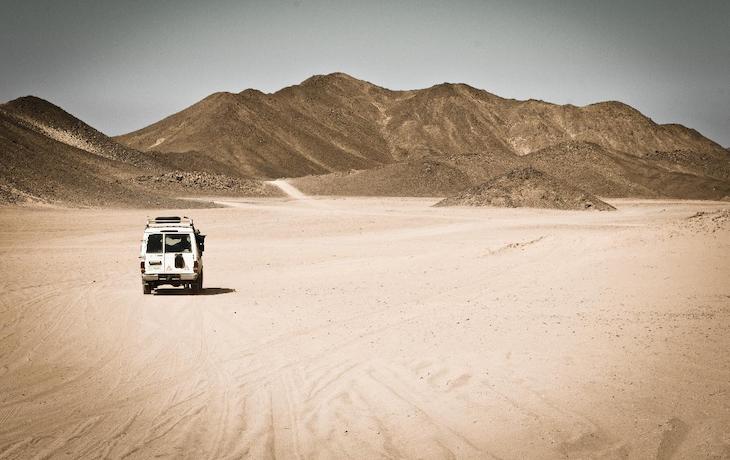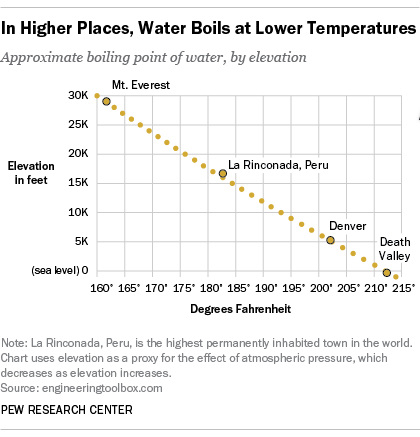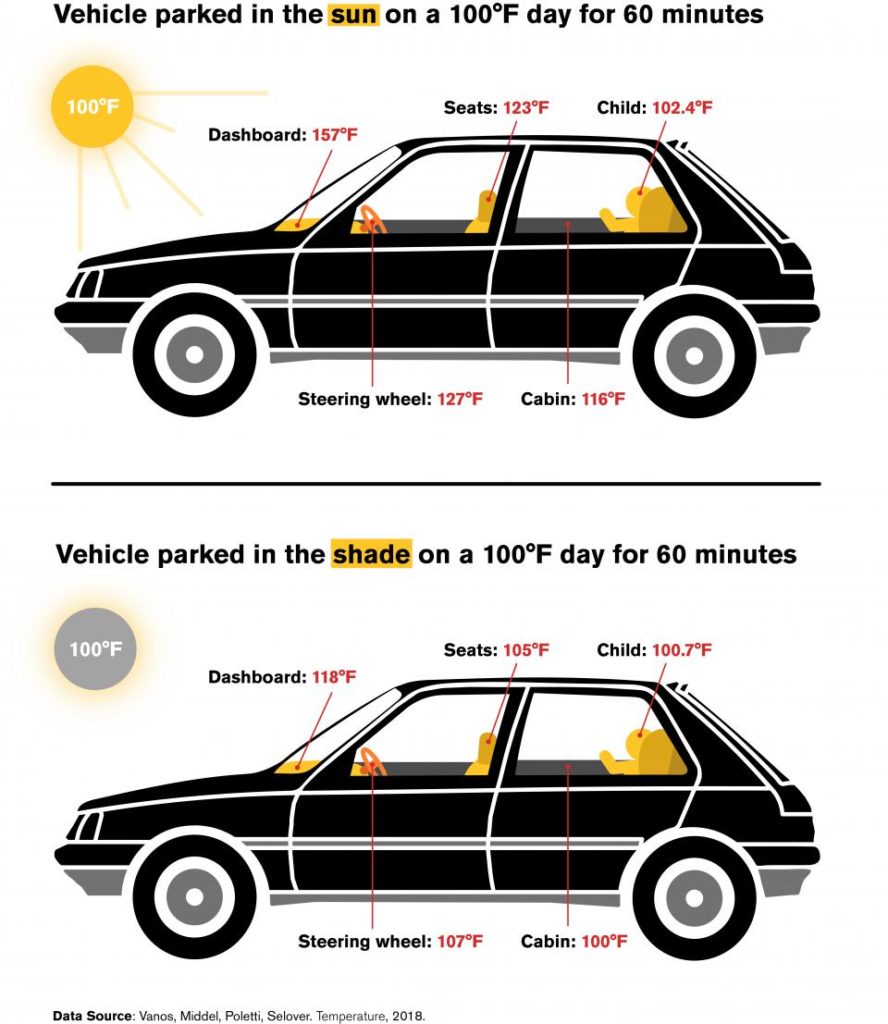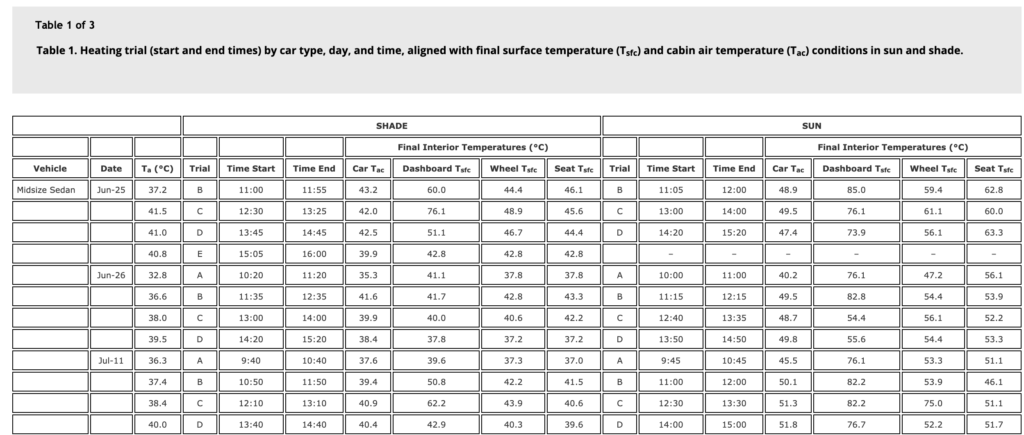You probably know that the inside of vehicles can get surprisingly hot — much hotter than the average air temperature outside of the car. That’s why police will break through a car window if a child or pet has been left inside even though it’s “only 90 degrees out.”
Everyone with a vehicle should keep some emergency supplies stored inside. But do you need to worry about your stored water boiling in the summer?
Summary:
- Even in the hottest conditions, stored water will not boil inside of a vehicle.
- However, liquids like alcohol can boil in a hot car and many types of food will rupture/explode.
- If the sun is directly hitting a clear water bottle, that can cause other problems like fire or leached chemicals.
- 212°F/100°C is the standard boiling point, but remember that water boils at lower temps as you go up in altitude.
- Yet higher altitudes are often colder, so you’re still unlikely to reach the lower boiling point.
Elevation does affect boiling points but doesn’t matter for this case
The boiling point of water changes with the atmospheric pressure, dropping by about 1°F for every 500 extra feet of elevation.
In the simplest terms, air has weight, which puts pressure on everything. The lower your elevation the more air is pressing on you. The higher your elevation, the less air is pressing on you. More pressure makes it harder for water to escape as a gas. Less pressure makes it easier.
There’s a simple experiment that demonstrates this principle: put warm water in a syringe, eliminate the excess air, and as you pull the plunger and reduce pressure on the water, it will boil at much lower temperatures than 212°F/100°C. In the video below, DeWayne Leineman easily boils water at 82°C (179.6°F). Water can boil at room temperature if you use a vacuum pump.
On Mt. Everest, water can boil at temperatures as low as 160°F (71.1°C). But Mt. Everest is never going to reach an ambient temperature that can boil water because the temperature tends to drop at higher elevations. La Rinconada, Peru, the midpoint of the above map, rarely gets over 50°F even in the peak of summer, a far cry from the 180°F (82.2°C) boil point. In Death Valley, California, the highest recorded temperature was 129.9°F (54.4°C) just a few weeks ago, but the boil point is near the typical 212°F/100°C. It’s hot enough to cook a steak to medium rare, but could water boil?
How hot does a car get?
A study published in the journal Temperature documented Arizona State University scientists parking cars in the sun in Tempe, Arizona during the summer, and found temperatures as high as 157°F on the dashboards, 127°F on the steering wheels, and 123°F on the seats.
I performed a little test of my own. On a 92°F (33.3°C) day, I put a thermometer in the trunk of my car sitting in the sun. I pulled it out at 100°F (37.8°C) and put it in the driver’s seat, which was shaded. After five minutes, it was at 110°F (43.3°C). Finally, put it on the sunny dashboard. After five minutes, the thermometer was hot to the touch and the temperature had exceeded the thermometer’s 120°F limit. What I learned by doing that is the trunk stays cooler than the cabin, with the dashboard being the hottest part.
W&W Auto Detailing in Gilbert, Arizona shared an amusing video where they took temperature measurements on cars in the parking lot on a 120°F (48.9°C) day. He read 207°F (97.2°C) on the roof of his black Camaro, which was by far the hottest temperature he read (a white car was about 65°F cooler, something to keep in mind if you live in a hot environment). The inside of the car was much cooler, with the highest temperature at around 180°F (82.2°C).
So you might be able to boil water on the hood of a black car in extreme heat if the atmospheric pressure was low enough, like in Denver. But the highest recorded temperature in Denver (again, this summer) was 100°F (37.8°C).
So, barring some extreme temperature increases in the coming years, water just isn’t going to boil sitting in your car. But there are some other things that could.
Ambient vs. surface temperature
The more engineering-minded of you may be frustrated that the surface and ambient air temperatures are intermingled, so let’s explore the real-world relationship between the two. Namely, which is typically hotter: surface temperature or ambient temperature?
It’s a complex subject, especially when discussing the cabin temperature of a car, because sunlight is a major factor. In the ASU study, which measured both ambient and surface temperatures, the relationship isn’t always clear.
There is one consistent pattern: the dashboard is consistently hotter than the ambient temperature, but not always by much. However, ambient, surface wheel, and surface seat temperatures tend to be pretty close. In none of the study’s data does any temperature get close to the 100°C needed to boil water.
The company PaperThermometer, which makes temperature-sensing stickers, has a great layman’s guide to the relationship between ambient and surface temperature. Typically, surface temperature lags behind ambient temperature. They use the example of a dishwasher. The FDA requires that the dishes reach 160°F (71°C), but to do so, dishwashers typically have to use a rinse at 180°F (82°C). Of course, dishwashers don’t have the sun beaming into them.
Don’t use clear disposable water bottles or alcohol
Another thing you don’t want to leave in a hot car is clear, disposable water bottles. For one, they’re a fire hazard. When exposed to direct sunlight, a full water bottle can act as a magnifying glass and quickly start a fire. Also, heat can cause endocrine-disrupting chemicals to leach into the water. Of course, in a dire situation, a little endocrine disruption is preferable to dehydration.
More: Review: Count Down presents a grim, plastic-coated view of humanity’s infertile future
Finally, alcohol has a much lower boiling point than water, at 132.8°F (56°C). That includes things like rubbing alcohol, hand sanitizer, and high-proof liquor. However, it’s unlikely to create a hazardous situation, just a mess if the alcohol boils and blows the container. It might also reduce the effectiveness of your hand sanitizer.





You are reporting the comment """ by on